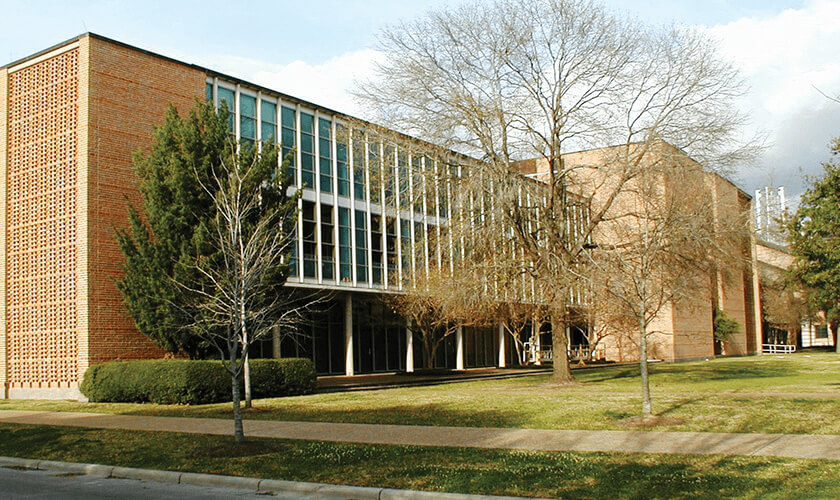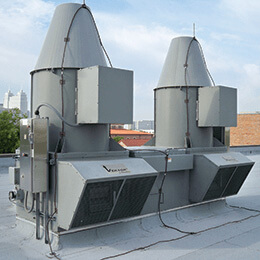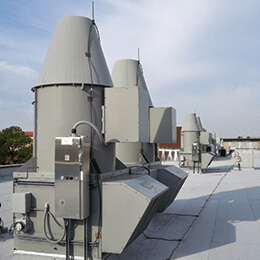Project Profile: Rice University, M.D. Anderson Biological Laboratories Building

The Challenge
• Exhaust laboratory fumes high above the rooftop to prevent reintroduction into the intake airstream.
• Reduce maintenance and energy costs by replacing 13 lab and general exhaust systems.
• Reduce rooftop safety hazards by removing the potential for contaminated exhaust air to drift back down to the roof level, and by eliminating guy wires.Â
In 2007, the third floor of the four-story, 50-year-old M.D. Anderson Biological Laboratories Building at Rice University in Houston, Texas was renovated to provide updated, flexible laboratory facilities to support state-of-the-art research. The existing laboratory exhaust system relied on 13 individual fans to exhaust fumes from fume hoods and general lab exhaust in laboratories on three floors of the building. Having reached the end of their operational life, the existing exhaust fans were due for replacement. Operating so many fans also used excessive energy and required extensive maintenance time. Replacement of bearings was nearly a continuous process. With fans down for repair, the potential for disruption of important research projects was significant. In addition, the many different exhaust systems crowded the building’s rooftop and required the attachment of guy wires to the exhaust stacks for support. The maze of numerous discharge stacks and guy wires made access difficult for workers who needed to service this, and other rooftop equipment.
Greenheck’s Solution
• Three Greenheck laboratory exhaust systems, Model Vektor-H
Three Greenheck Vektor-H laboratory exhaust systems (one single and two double units) were selected to do the work of more than a dozen existing fans. The small footprint for each one-piece, factory assembled Vektor-H frees up extensive space on the roof. With capacities up to 24,000 cfm and up to 3.5 in. wg, each Vektor®-H uses a belt-driven tubular centrifugal fan with an innovative powerful nozzle design to safely propel fumes up and away from the building. The potential for roof contamination and introduction of fumes back into the intake air stream has been eliminated. An optional variable volume bypass plenum enhances system performance by adding ambient air to the exhaust, which increases dilution as well as exhaust momentum.
The fan can run at constant rpm and cfm without the need for a variable frequency drive, thereby saving energy. Vektor-H systems are easy to install and can withstand winds of up to 125 mph without guy wires. Fan housings include an over-sized door for easy access to interior fan components that are located out of the contaminated air stream. Minimum bearing life for Greenheck’s Vektor-H laboratory exhaust system exceeds L(10) 100,000 hours (equivalent to Average Life or L(50) 500,000 hours). Vektor-H laboratory exhaust systems are licensed to bear the AMCA Seal for Sound and Air Performance and also meet ANSI Z9.5 and ASHRAE guidelines.
The Results


